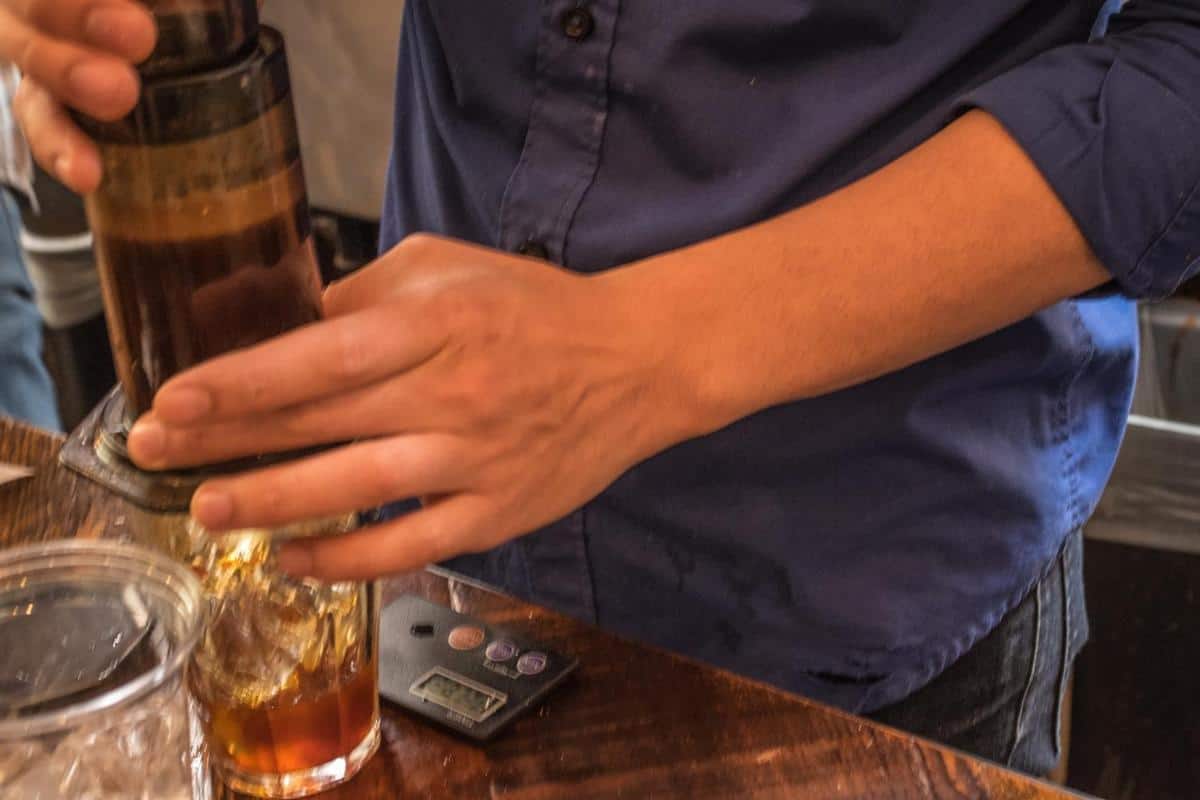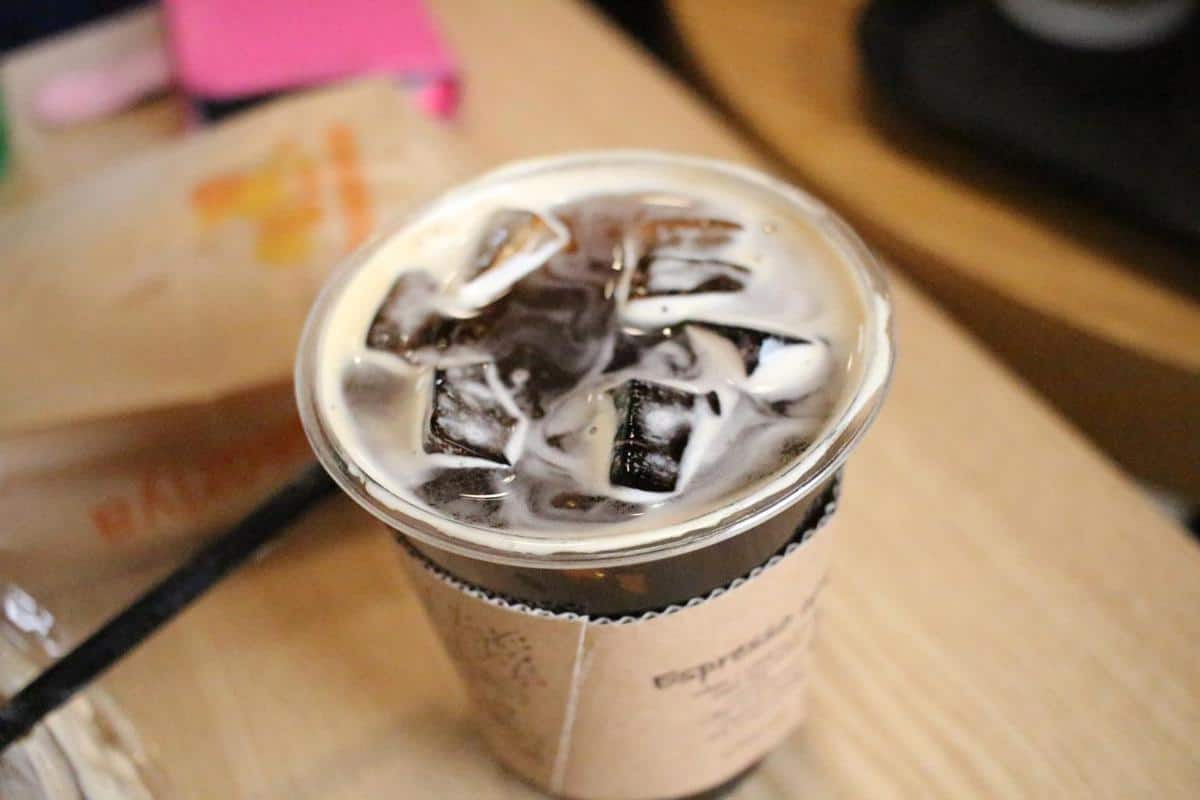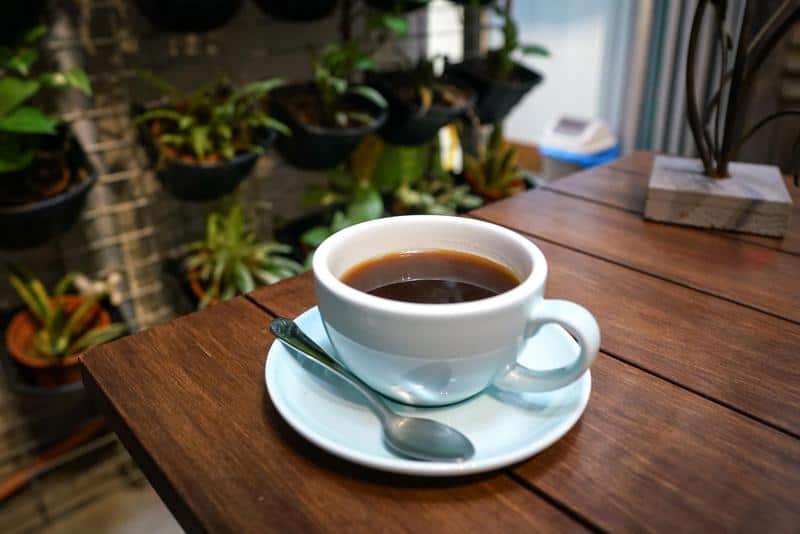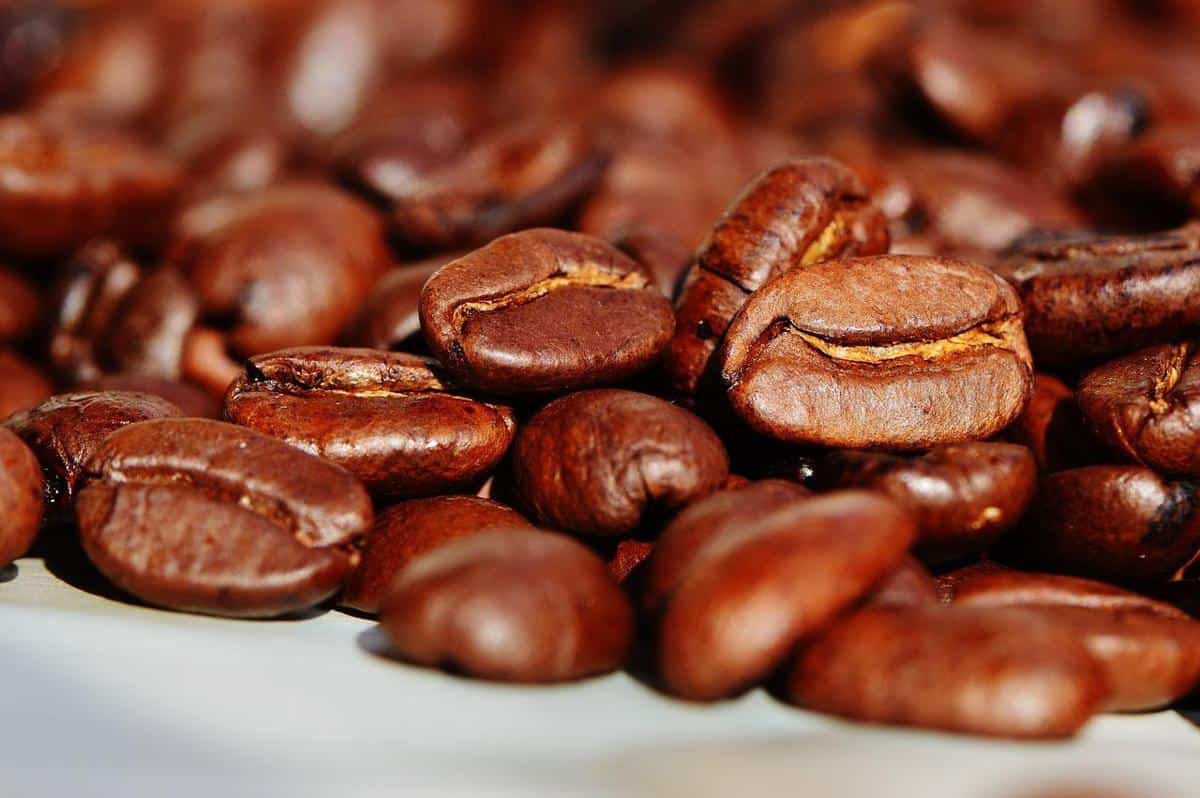Flash brew coffee, a brewing technique that has been gaining popularity in recent years, is revolutionizing the way we enjoy our caffeine fix. In this article, we will delve into what exactly flash brew coffee is and why it has become such a beloved method of brewing coffee.
By exploring its origins, comparing it to other brewing methods, understanding the science behind its flavor, and providing a step-by-step guide on how to make it yourself, we aim to equip you with all the knowledge needed to embrace the power of flash brew coffee.
So what exactly is flash brew coffee? Unlike traditional brewing methods that can take several minutes or even hours, flash brew coffee is made by rapidly dripping hot water over ground coffee beans. This quick process extracts unique flavors and aromas from the beans, resulting in a cup of coffee that is bold, vibrant, and bursting with caffeine power.
One of the key benefits of flash brew coffee is its ability to preserve intricate flavors that may be lost with other brewing techniques. This method allows for a balance between acidity and bitterness, highlighting complex notes in the coffee beans that may go unnoticed otherwise. Additionally, because flash brewing involves using hot water instead of cold water like in cold brews or full immersion methods like French press, it produces a cup of coffee with increased clarity and brightness.
As you continue reading this article, you will explore the history and origin of flash brew coffee as well as how it evolved as a popular brewing technique. You will also discover how flash brew coffee stacks up against other popular brewing methods like French press or cold brew.
And if you’re intrigued by the science behind the flavor profile of flash brew coffee or want tips on making your own perfect cup at home – we’ve got you covered too.
So get ready to unlock your caffeine power with flash brew coffee. Whether you’re an avid lover of strong black coffees or simply looking for new ways to indulge in your favorite beverage, this exciting brewing method is sure to enhance your coffee experience. So grab a cup, sit back, and prepare to delve into the world of flash brew coffee – where bold flavors and a powerful caffeine kick await.
Exploring the Origins of Flash Brew Coffee
Flash brew coffee, also known as Japanese iced coffee, has been gaining popularity in recent years for its refreshing and vibrant flavor. But where did this brewing technique originate? Let’s delve into the history and evolution of flash brew coffee to gain a deeper understanding of its origins.
Unveiling the history and origin of flash brew coffee
Flash brew coffee has its roots in Japan, where it is commonly referred to as “Mizudashi” or “Kōhīi.” The brewing method emerged as a more convenient alternative to traditional cold-brewing techniques. It became popular in the 1960s when the Kyoto-style slow-drip cold brew towers were introduced. However, flash brew coffee can be traced back even further to the Hario V60 pour-over method that dates back to the pre-World War II era.
How it evolved as a brewing technique
Over time, flash brew coffee gained recognition for its ability to harness all the intensity and complexity of flavor found in freshly brewed hot coffee while being served over ice. This innovative technique involved pouring hot water directly onto freshly ground coffee grounds, allowing it to extract all the wonderful flavors within minutes, before being poured over ice to create a perfectly chilled cup of joe.
Notable regions or cultures associated with flash brew coffee
While flash brew coffee is synonymous with Japanese-style brewing, it has now garnered international appeal. Coffee lovers from around the world appreciate this unique technique for its ability to capture both hot and iced flavors simultaneously. Flash brew methods have their variations across different countries and cultures, such as Vietnamese Ca Phe Sua Da or Ethiopian Jebena coffee brewing techniques that employ similar principles but showcase distinct regional flavors.
The origins of flash brew coffee reveal a rich history rooted in innovation and convenience. By understanding its humble beginnings, we can better appreciate how this brewing method revolutionized the way we enjoy both hot and chilled versions of our favorite caffeinated beverage. As flash brew coffee continues to gain traction, let’s explore its comparisons to other brewing methods in the next section.
Flash Brew Coffee vs. Other Brewing Methods
When it comes to brewing coffee, there are various methods to choose from, each offering a unique flavor profile and brewing experience. In this section, we will delve into the comparison between flash brew coffee and other popular brewing techniques such as French press or cold brew.
French Press
- French press is known for its full-bodied and robust flavor. It involves steeping coarsely ground coffee in hot water before separating the brewed coffee from the grounds using a plunger.
Pros of French Press:
- Rich and bold flavor: The immersion brewing method of French press extracts the full range of flavors from the coffee beans.
- Full control: Users can adjust variables such as steeping time and water temperature to customize their cup of coffee.
- No need for paper filters: The metal filter used in a French press allows more oils and sediments to pass through, resulting in a bolder taste.
Cons of French Press:
- Sediment in the cup: Due to the metal filter, some sediment may end up in your cup, which can be unpleasant for those who prefer a cleaner brew.
- Inconsistent extraction: Achieving consistent results with a French press can be challenging due to variations in steeping time and water temperature.
Cold Brew
- Cold brew involves steeping coarse coffee grounds in cold water for an extended period, usually overnight. The resulting concentrate is then diluted with water or milk before consumption.
Pros of Cold Brew:
- Smooth and low-acidic taste: Cold brew has a milder acidity compared to traditionally brewed coffee, making it easier on the stomach.
- Convenient: Once prepared, cold brew concentrate can last up to two weeks in the refrigerator, allowing for on-demand servings.
- Versatility: Cold brew can be enjoyed straight over ice or mixed with various flavors for refreshing beverages like iced lattes or flavored coffee drinks.
Cons of Cold Brew:
- Longer preparation time: As cold brew requires hours of steeping, it is not suitable for those seeking an immediate caffeine fix.
- Lower caffeine content: Due to the longer steeping time, cold brew generally has less caffeine compared to other methods.
- Specific equipment required: Cold brew requires specific equipment like a French press or a dedicated cold brew maker, which may not be readily available to everyone.
While French press and cold brew have their own appeal, flash brew coffee offers a middle ground by combining the advantages of both immersion brewing and quick extraction. The flash brewing method delivers a cup of coffee with the richness of French press and the brightness of pour-over methods, all while maintaining a shorter brew time.
The Science Behind the Flavor of Flash Brew Coffee
Flash brew coffee is not only beloved for its convenience and speed, but it also offers a unique flavor profile that sets it apart from other brewing methods. To truly understand the science behind the flavor of flash brew coffee, it’s important to delve into the chemical reactions that occur during the brewing process.
The Role of Temperature
One of the key factors that contribute to the flavor of flash brew coffee is temperature. Flash brewing involves using hot water to quickly extract flavors from the coffee grounds, resulting in a vibrant and aromatic cup of joe. The high temperature allows for efficient extraction of both the desirable compounds, such as caffeine and oils responsible for aroma, and less pleasant compounds, such as bitter acids.
The optimal temperature range for flash brewing typically falls between 195°F (90°C) and 205°F (96°C). Within this range, various chemical reactions take place at an accelerated rate, leading to a balanced extraction that highlights the coffee’s natural flavors while minimizing any off-flavors.
It’s important to note that using water that is too hot can lead to over-extraction and a bitter taste, while water that is too cold may result in under-extraction and a weak or sour cup of coffee.
The Impact of Time
Time plays a crucial role in achieving the desired flavor profile when making flash brew coffee. Unlike other brewing methods where water remains in contact with coffee grounds for extended periods, flash brewing focuses on brief yet intense extraction. The reduced contact time prevents excessive extraction of undesirable compounds and results in a cleaner taste.
Typically, flash brewing takes around 2-4 minutes from start to finish. This short contact time ensures that only the most desirable flavors are extracted from the beans while leaving behind unwanted bitterness or acidity. It’s worth noting that grinding the coffee beans to a coarser consistency can help regulate contact time and achieve optimal flavor extraction in flash brewed coffee.
The Influence of Brewing Equipment
Apart from temperature and time, the choice of brewing equipment also factors into the flavor profile of flash brew coffee. The type of brewing device used can affect factors such as water distribution, extraction efficiency, and overall taste.
For instance, a pour-over method using a dripper with spiral grooves can help evenly distribute water over the coffee bed, ensuring even extraction throughout. On the other hand, immersion methods like the AeroPress can allow for a fuller-bodied cup with bolder flavors due to increased contact time with coffee grounds.
The choice of filter medium can also impact flavor. Paper filters tend to produce a cleaner and smoother brew by removing oils and sediments from the coffee, while metal filters allow more oils and sediment to pass through, resulting in a richer mouthfeel. Experimenting with different brewing equipment can offer new nuances and experiences in terms of flavor when it comes to flash brew coffee.
Understanding these scientific principles behind flash brew coffee’s flavor allows coffee enthusiasts to appreciate its unique characteristics and make informed choices when brewing their own cup. By carefully controlling temperature, time, and brewing equipment, one can achieve a cup of flash brew coffee that perfectly highlights the nuanced flavors inherent in each batch of beans.
Step-by-Step Guide
Flash brew coffee has gained popularity for its quick and convenient brewing process, as well as its delicious flavor profile. If you’re new to flash brew coffee or simply want to learn how to perfect your own cup at home, this step-by-step guide will walk you through the process and provide tips for achieving consistent results.
Equipment Needed for Flash Brewing & Initial Instructions
To make flash brew coffee, you’ll need a few key pieces of equipment and follow these initial instructions:
| Equipment Needed | Instructions |
|---|---|
| Coffee grinder | Start by grinding your desired amount of coffee beans using a burr grinder set to a medium-coarse grind size. |
| Pour-over dripper or coffee maker | Place the pour-over dripper or coffee maker on top of a mug or carafe, and insert the filter. |
| Coffee filter | Rinse the filter with hot water from the kettle, discarding any excess water that drips into the mug or carafe. |
| Kettle | Add the ground coffee into the filter, ensuring it is evenly distributed. |
| Scale | Start pouring hot water onto the ground coffee in a slow, circular motion, saturating all the grounds. Allow the coffee to bloom for about 30 seconds. |
Final Steps to make Flash Brew Coffee
After following the insturctions above, continue with the steps below to make your own delicious cup of flash brew coffee:
- Start pouring hot water onto the ground coffee in a slow, circular motion, saturating all the grounds. Allow the coffee to bloom for about 30 seconds.
- Continue pouring small amounts of water in a circular motion over the coffee bed, maintaining a consistent flow rate.
- Once you have poured the desired amount of water, wait for all the water to flow through the filter and into the mug or carafe below.
- Remove the dripper or coffee maker and discard the used grounds and filter.
- Your flash brew coffee is now ready to be enjoyed. Pour it into your favorite mug and savor its rich flavor and aroma.
Tips and Tricks
- Experiment with different coffee-to-water ratios to find your preferred strength.
- Adjust grind size as needed – finer for a stronger flavor, coarser for a milder taste.
- Use freshly roasted beans for optimum freshness and flavor.
- Clean your brewing equipment thoroughly after each use to maintain optimal taste.
Remember that practice makes perfect when it comes to flash brew coffee. Don’t be afraid to tweak variables like grind size, water temperature, and pouring technique until you find your ideal cup of this flavorful beverage.
Unlocking the Health Benefits of Flash Brew Coffee
Flash brew coffee not only delivers a powerful caffeine kick, but it may also offer a range of health benefits. Research suggests that flash brewing can maximize the extraction of antioxidants and other beneficial compounds from coffee beans, making it a potential boon for overall well-being.
One major advantage of flash brew coffee is its high level of antioxidants. Antioxidants are compounds that help protect the body against free radicals, which are unstable molecules that can cause cell damage and inflammation.
Coffee is known to be a rich source of antioxidants, and flash brewing may enhance their concentration even further. A study published in the Journal of Agricultural and Food Chemistry found that flash brewing resulted in higher levels of total phenols and antioxidant activity compared to other brewing methods like French press or drip brewing.
Additionally, flash brewed coffee has been found to have higher caffeine content compared to traditional brewing methods. This is due to the shorter contact time between the coffee grounds and water during the brewing process. Caffeine is a natural stimulant that can improve focus, alertness, and physical performance.
However, it’s important to note that excessive consumption of caffeine can lead to negative effects such as restlessness, insomnia, or increased heart rate. Therefore, individuals should still consume flash brewed coffee in moderation.
| Health Benefits | Flash Brew Coffee | French Press | Cold Brew |
|---|---|---|---|
| Antioxidant Content | High | Moderate | Moderate |
| Caffeine Content | High | Moderate | Low |
| Flavor Profile | Bright and crisp | Rich and bold | Smooth and mellow |
In summary, flash brew coffee offers more than just a powerful caffeine boost. Its high antioxidant content and enhanced caffeine concentration make it an appealing choice for those seeking potential health benefits. However, it’s important to remember that individual preferences, sensitivities, and health concerns should also be taken into consideration when choosing a brewing method. With the proper moderation, flash brew coffee can be enjoyed as part of a well-rounded lifestyle.
The Best Coffee Beans for Flash Brew Coffee
Flash brew coffee is a brewing method that allows the flavors and aromas of coffee beans to truly shine. To achieve the best results with flash brewing, it is important to select the right type of coffee beans. Here are some recommendations for the best coffee beans to use when making flash brew coffee:
- Single-Origin Beans: Single-origin coffee beans are sourced from a specific region or farm, allowing for a more distinct and unique flavor profile. When making flash brew coffee, opt for single-origin beans that have been roasted to a medium or medium-dark level. This will bring out rich flavors and balanced acidity in your cup.
- Light Roasts: Flash brewing is known for enhancing and preserving the natural flavors of coffee, making it an excellent choice for light roast beans. Light roasts have a brighter, fruitier flavor profile with higher acidity, which can be intensified through flash brewing. Look for light roasts with tasting notes like citrus, berry, or floral for a refreshing and vibrant cup.
- Specialty Beans: Specialty coffee beans are grown under optimal conditions, harvested at peak ripeness, and meticulously processed to preserve their flavors. These high-quality beans make an excellent choice for flash brew coffee as they offer complex flavor profiles and distinct tasting notes. Seek out specialty-grade beans from reputable roasters to ensure you’re getting the best quality.
- Experiment with Different Origins: One of the joys of flash brewing is the opportunity to explore different flavor profiles from various coffee-growing regions around the world. Consider trying beans from different origins such as Ethiopia for its bright berry notes, Colombia for its caramel sweetness, or Costa Rica for its clean and balanced flavors.
When selecting coffee beans for flash brew coffee, it’s crucial to choose freshly roasted ones. Freshly roasted beans retain more flavor and aroma compared to those that have been sitting on store shelves for extended periods. Consider purchasing whole bean coffees rather than pre-ground options to ensure the ultimate freshness. Invest in a quality burr grinder to grind your coffee beans just before brewing for the best flavor extraction.
By choosing the right coffee beans for flash brew coffee, you can truly unlock the flavor potential and experience the full caffeine power of this brewing method. Experiment with different regions, roast levels, and flavors to find your perfect cup of flash brew coffee.
Flash Brew Coffee Around the World
Flash brew coffee, also known as Japanese iced coffee, has gained popularity not only in its country of origin but also around the world. This brewing method has found its way into the hearts and cups of coffee enthusiasts globally. Each region brings its own unique twist to the flash brew coffee experience, resulting in a vast array of flavors and preparations.
In Japan, flash brew coffee is a staple in cafes and households alike. The Japanese take great pride in their meticulous approach to brewing coffee, which involves precision and attention to detail. Traditionally, the Hario V60 pour-over method is used to achieve a clean and well-balanced cup of flash brew coffee. The Japanese focus on showcasing the intricate flavors and aromas of the beans by relying on this hand-pouring technique.
Moving across continents to Europe, flash brew coffee has also made its mark in countries like Germany and Denmark. In Germany, cold drip towers are commonly used for flash brewing, allowing for a slow extraction process that enhances the sweetness and clarity of the final cup. Danish coffee enthusiasts have embraced both flash brewing and cold drip methods, creating a vibrant specialty coffee scene with an emphasis on Nordic-style light roasts.
Flashing over to North America, flash brew coffee can be found in artisanal cafes from coast to coast. American baristas often opt for using pour-over drippers or Aeropress devices for their flash brewing needs. With a wide variety of beans available from different regions around the world, patrons are treated to diverse flavor profiles ranging from fruity African notes to nutty South American hints.
Overall, it is clear that flash brew coffee has become a global phenomenon with each region offering its own take on this brewing method. Whether you prefer the traditional Japanese pour-over technique or experiment with different tools and variations, there is an endless world of possibilities when it comes to enjoying flash brew coffee around the globe. So grab your favorite beans and try out this caffeine-powered brewing method for an unforgettable coffee experience.
Conclusion
In conclusion, flash brew coffee is a powerful and innovative brewing method that has gained significant popularity in recent years. Its unique characteristics and advantages over traditional brewing methods make it a compelling choice for coffee lovers looking to enhance their caffeine experience. By understanding the origins, science, and health benefits of flash brew coffee, as well as following a step-by-step guide for making your own cup, anyone can unleash the full potential of this brewing technique.
One of the key takeaways from exploring flash brew coffee is its ability to unlock bold flavors and aromas. The chemical reactions that occur during the flash brewing process contribute to a taste profile that is distinctively bright, smooth, and balanced.
With careful attention to temperature, time, and the right brewing equipment, enthusiasts can achieve a perfect cup of flash brew coffee every time. This versatility allows for experimentation with different beans and flavor profiles, making it an exciting option for those who enjoy variety in their daily caffeine fix.
Aside from its incredible taste, flash brew coffee also offers numerous health benefits. By preserving more antioxidants and beneficial compounds present in the coffee beans compared to other brewing methods, it provides a potent dose of natural goodness with every sip. Additionally, the controlled extraction process ensures that the caffeine content remains consistent while reducing any undesirable bitterness or acidity often associated with other brewing techniques.
Frequently Asked Questions
What is flash brewed coffee?
Flash brewed coffee is a brewing method that involves quickly extracting the flavors and characteristics of coffee using hot water. Unlike traditional methods like drip brewing, which can take several minutes, flash brewed coffee is made in a matter of seconds. This rapid extraction process ensures that the coffee maintains its vibrant flavors and aroma.
What is the flash coffee technique?
The flash coffee technique is a specific brewing method that combines elements from both hot brewing and cold brewing. It typically involves using hot water in combination with ice or chilled equipment to brew the coffee rapidly, hence the term “flash.”
By quickly extracting the flavors while maintaining a lower brew temperature, this technique allows for a balanced and smooth cup of coffee that showcases the best qualities of both hot and cold brews.
What is the difference between flash brew and cold brew?
One key difference between flash brew and cold brew lies in their respective brewing processes and durations. Cold brew involves steeping coarsely ground coffee in room temperature or cold water for an extended period, typically overnight, resulting in a smooth, low-acidity beverage.
On the other hand, flash brewing uses hot water to extract the flavors rapidly within just a few seconds, creating a brighter cup with distinct tasting notes and potentially higher acidity.
What is Japanese flash brew coffee?
Japanese flash brew coffee is a specific style of flash brewed coffee that originates from Japan. It emphasizes precision and meticulousness in its preparation to achieve an excellent cup of coffee with exceptional clarity of flavor.
Japanese flash brewers often use specialized equipment such as pour-over drippers or siphon brewers to control variables like water flow rate and extraction time meticulously. This approach results in a clean, nuanced cup with well-defined flavor profiles that highlight the unique characteristics of each coffee bean.
What is special about Flash Coffee?
What makes Flash Coffee special is its ability to deliver a flavorful and aromatic cup of coffee quickly without compromising on quality or taste. The rapid extraction process used in flash brewing ensures that the flavors are captured effectively while preserving the brightness and complexity often associated with specialty coffees.
Additionally, flash brew techniques allow for experimentation and customization, allowing baristas to fine-tune variables such as water temperature, brew time, and coffee-to-water ratio to achieve desired flavors. This versatility makes Flash Coffee a go-to choice for those seeking a refreshing and vibrant coffee experience.










